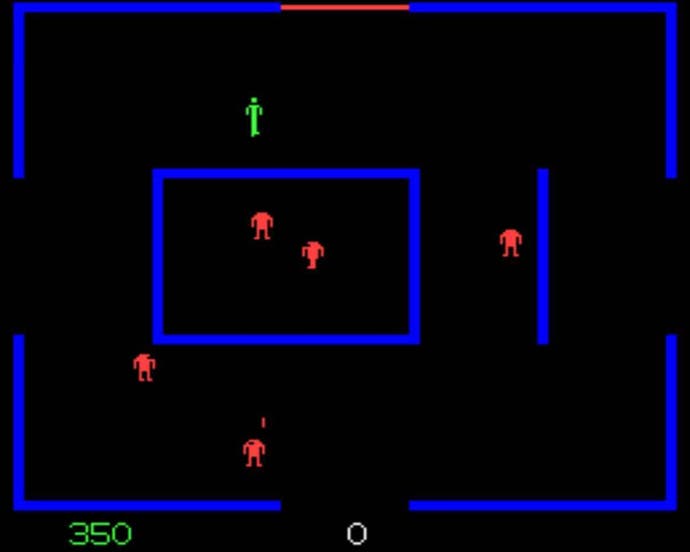Berzerk
Chicken! Fight like a robot!
Seldom have arcade games been so accurately titled as Berzerk. Not only does it represent the actions of the mental antagonists quite accurately, it reflects the surreal and outlandish design that drives this crazy game to devour our loose change.
Supposedly dragged kicking and screaming from the fevered dreams of designer Alan McNeil, Berzerk placed players in control of an armed humanoid figure desperate to escape a series (well, 64,000, to be precise) of mazes infested by violently senile robots. A bizarre concept, to be sure, but one which provided some hectic, addictive gameplay for any arcade goer in just the right state of mental fragility.
Touching the walls of the mazes or any of the rabid robots cost a life, but that was nothing out of the ordinary. The real mystery in Berzerk was the random insanity of the cybernetic antagonists. The robots our humanoid was commissioned to destroy have apparently gone mad; bouncing around, spinning on the spot, self-destructing against the fatal walls and crashing into each other. Whereas most arcade game enemies at least make some effort to target the player, these irrational contraptions are their own opponents.

Enter Evil Otto; the indestructible entity that still has enough sanity rolling around in his brain pan to actually pursue the player. Evil Otto is a time-limit metaphor, entering the screen when the player takes too long putting those mental monsters to pasture, and prompts a quick escape whether the playfield has been cleared of senile androids or not.
Everything about Berzerk lives up to its namesake, from the rabid robots to Evil Otto’s frantic bouncing and the ridiculous number of levels. This quintessential surrealism makes it almost impossible not to love the game, and any entertainment medium that makes its audience regularly laugh out loud is worth a place in the top 50.
